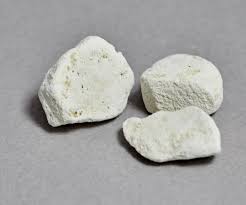Blog
Phosphoric Acid Structure
Understanding the phosphoric acid structure is fundamental for anyone involved in chemistry or industries that utilize this compound. The phosphoric acid structure plays a crucial role in its chemical behavior, applications, and effectiveness. In this article, we’ll delve into the details of the phosphoric structure, how it impacts its uses, and why it’s important to grasp its composition.
What is Phosphoric Acid?
Phosphoric acid is a clear, colorless liquid that is commonly used in various industrial and chemical processes. Its phosphoric structure consists of one phosphorus atom centrally bonded to four oxygen atoms, forming a tetrahedral geometry. The molecular formula of phosphoric acid is H₃PO₄, indicating three hydrogen atoms, one phosphorus atom, and four oxygen atoms.
The Chemical Composition of Phosphoric Acid Structure
The phosphoric structure features a central phosphorus atom bonded to four oxygen atoms. Three of these oxygen atoms bond singly to hydrogen atoms, forming phosphate groups. The fourth oxygen atom bonds doubly to the phosphorus atom. This arrangement results in a tetrahedral shape, essential for its chemical reactivity.
Understanding the Bonding in Phosphoric Acid Structure
In the phosphoric structure, the phosphorus atom forms single bonds with three hydroxyl groups (–OH) and a double bond with one oxygen atom. This configuration creates an acidic environment, making phosphoric acid a versatile compound used in various applications.

Key Applications of Phosphoric Acid Structure
The phosphoric structure influences its application in several industries. Here’s a look at how its structure impacts its uses:
Phosphoric Acid in Fertilizers
One of the primary applications of phosphoric acid is in the production of fertilizers. The phosphoric structure allows it to react with other chemicals to form phosphate compounds that are essential for plant growth.
Phosphoric Acid in Food and Beverages
Phosphoric is commonly used in the food industry as an acidulant and flavoring agent. The phosphoric structure contributes to its effectiveness in regulating acidity and preserving food products.
Phosphoric Acid in Cleaning Products
The phosphoric structure makes it an effective ingredient in many cleaning products. Its ability to dissolve rust and mineral deposits is a direct result of its chemical composition.
How to Analyze Phosphoric Acid Structure
Analyzing the phosphoric structure involves several techniques, including:
Spectroscopy
Spectroscopic methods are used to study the phosphoric structure at the molecular level. These methods provide insights into the bonding and functional groups present in the compound.
Crystallography
X-ray crystallography helps determine the precise arrangement of atoms in the phosphoric structure. This technique provides detailed information about the molecular geometry and bonding patterns.
For top-notch phosphoric acid and other chemical products, visit our store today. Explore our selection and make a purchase to meet your industrial and laboratory needs. Quality and reliability are guaranteed!
Importance of Understanding Phosphoric Acid Structure
Grasping the phosphoric acid structure is crucial for various reasons:
- Quality Control: Understanding the structure helps ensure the quality and purity of phosphoric used in industrial processes.
- Effective Usage: Knowledge of the phosphoric structure enables more efficient use in applications such as fertilizers, food processing, and cleaning agents.
- Safety: Awareness of the chemical properties associated with the phosphoric structure ensures safer handling and usage.
Where to Purchase Phosphoric Acid
If you’re looking to purchase high-quality phosphoric , our store offers a range of products suitable for various applications. We ensure that our products meet industry standards and are available at competitive prices.
FAQ: Phosphoric Acid Structure
1. What is the phosphoric structure? The phosphoric structure has a central phosphorus atom bonded to four oxygen atoms. The phosphorus atom single-bonds with three of these oxygen atoms, forming hydroxyl groups, while it double-bonds with the fourth oxygen atom. This arrangement creates a tetrahedral shape.
2. Why is the phosphoric acid structure important? The phosphoric structure is important because it determines the chemical properties and reactivity of phosphoric . Its tetrahedral structure influences its use in various applications, including fertilizers, food processing, and cleaning products.
3. How does the phosphoric acid structure affect its use in fertilizers? The phosphoric structure allows it to react with other chemicals to form phosphate compounds, which are essential nutrients for plant growth. This makes phosphoric acid a critical component in fertilizer production.
4. Can you explain the bonding in the phosphoric structure? In the phosphoric structure, the phosphorus atom forms single bonds with three hydroxyl groups (–OH) and a double bond with one oxygen atom. This configuration results in an acidic environment and contributes to the compound’s reactivity.
5. What methods are used to analyze the phosphoric structure? Spectroscopy provides insights into molecular bonding, while X-ray crystallography determines the precise arrangement of atoms.
6. How is phosphoric acid used in food and beverages? In the food industry, phosphoric acid is used as an acidulant and flavoring agent. The phosphoric acid structure helps regulate acidity and preserve food products, enhancing flavor and extending shelf life.
7. What are the safety considerations related to the phosphoric structure? Understanding the phosphoric structure is crucial for safe handling. It ensures that industries use phosphoric acid correctly and follow appropriate safety measures to prevent accidents and health risks.
8. Where can I purchase high-quality phosphoric acid? You can purchase high-quality phosphoric from our store. We offer a range of products that meet industry standards and are available at competitive prices. Visit our store to find the best products for your needs.
9. How does the phosphoric acid structure compare to other ? Compared to other acids, phosphoric acid has a unique tetrahedral structure and different reactivity. Its structure makes it less corrosive than some other acids and suitable for specific applications such as fertilizers and food processing.
10. What are the common applications of phosphoric ? Common applications of phosphoric include its use in the production of fertilizers, food and beverages, cleaning products, and rust removal. Its versatile chemical structure makes it valuable in various industrial and commercial uses.
Conclusion
Understanding the phosphoric structure is essential for its effective application in various fields. From fertilizers to food processing, the phosphoric structure influences its utility and performance. For high-quality phosphoric acid, check out our store and ensure you get the best products for your needs.

